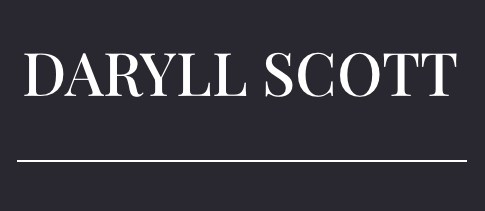Can we talk about feedback?
Leadership Techniques for Creating a Performance Culture

Intending to be as helpful as possible, I have written a longer-than-usual post.
I’m covering this in more detail than I normally would because I believe the ability to have performance conversations, give feedback, and approach potentially difficult conversations in a supportive, challenging, and motivational way is vital for any leader or manager.
So many leaders find these essential conversations tricky, but with some changes in perspective and a slightly different approach, they can change from being the ones you dread to the ones you look forward to.
A few years ago, one of my colleagues watched me give some fast, clear, informal feedback to one of my team members. Afterwards, they said, “You just told that person clearly that what they have done is not good enough, and they left the room happy and energised. How the hell did you do that?”
Like all leaders, I have my blind spots and weaknesses, but I am consistently good at motivating, developing and leading people. I have designed workshops and coached hundreds of leaders to increase their awareness and skill in these interactions. I even wrote a book about it in 2008 with my business partner at the time.
This continues to be the most challenging and most important interpersonal leadership ability: Research by Bain & Company found that, on average, an inspired employee is 2.25 times more productive than a merely satisfied one. Can you think of anything else you could do as a leader that makes this difference to organisational performance?
Interactions that encourage and inspire should be little and often. Yet, while leaders analyse their spreadsheets, define their aspirational strategies, and polish their presentations, it’s easy to forget that it’s the everyday, on-the-job interactions that create the performance culture.
The key to mastering potentially difficult interactions and making them motivational is not evidence, preparation or professionalism, it’s authentic interpersonal communication.
In this article, I will answer the following questions:
- Why is it so tricky?
- What can you do to set conversations up for success?
- How can you use feedback to coach change?
- What if everyone wanted feedback?
Before we explore the interpersonal, a quick note on frequency:
In many organisations, the only time people get clear feedback is during the formal review process.
Ideally, feedback should be fast, frequent and welcomed so that formal performance discussions become purely about rating and progression. That’s what happens in high-performance cultures, where feedback is welcomed as part of everyday conversations and causes no drama. This is entirely achievable, I will explain how a little later.
For organisations, striking the right balance between process and quality of conversation is tricky. Too much process disrupts the human connection by making it more about following the process than the quality of the conversation. No process is often almost as bad, as people tend to avoid performance-related conversations altogether.
Processes should be designed with the natural flow of the conversation in mind and should encourage regular, informal conversations between the formal ones. If we ‘save it up’ for the formal conversation, we make it a bigger deal than it needs to be; which is unhelpful.
Why is it so tricky to give feedback?
What are we so worried about? We may feel we don’t have enough information, unsure about how to approach the feedback, or conflicted because we do not agree with the message we need to deliver.
Whatever the reason, our discomfort, trepidation or conflict is fuelled by concern for how the feedback will be received. We worry the other person will take too much to heart or respond defensively.
This is really unfortunate because any such worries or expectations of difficulty create a self-fulfilling prophecy:
- You think, ‘They may not respond well to this’ .
- Your behaviour changes, becoming cautious, cold or overly-professional.
- They notice a difference in your behaviour, and they become anxious or defensive.
- You think, ‘I knew they wouldn’t respond well’ .
You confirm your expectations without realising that your concerns or expectations corrupted your behaviour, contributing to the outcome. Conversely, If you are clear-headed and hold positive expectations, that will positively influence the conversation for both parties.
So, how do you do that?
The magical power of communicating intention
As pointed out by Stephen M.R. Covey, “We judge ourselves by our intentions and others by their behaviour.” Other people’s intentions are opaque, so we can easily misjudge or misunderstand their communication or behaviour.
Worse still, we can make the ‘Fundamental Attribution Error’ (FAE) of observing an aspect of behaviour and seeing it not as circumstantial but as an indication of their entire character. For example, we subjectively judge a snippet of behaviour as inconsiderate, aggressive, or controlling, then decide it is a permanent trait, and they are an inconsiderate, aggressive, or controlling person. The truth is, nobody wakes up wondering whose day they can ruin or how they can sabotage their own career.
When we understand people’s intentions, their actions begin to make sense.
In our busy lives of back-to-back meetings, most interactions begin with a couple of social niceties, and then we crack on with the communication. The listener must then solve the puzzle of our intentions, where we are coming from and where the communication is going, which is a huge distraction.
If they guess your intentions wrongly, you will get halfway through the conversation and then begin to realise that what you are saying is not what the other person is hearing. You then have to backtrack and address the misunderstanding.
To be understood, we need to ‘frame’ our conversations by making our intentions overt. Doing so affects conversations in the following ways:
- Ensures the right meaning is attributed to your communication.
- Eliminates the distraction of wondering where it’s going.
- Primes their attention in a helpful direction.
- Clarifies what’s relevant and what isn’t.
- Stops them from ‘shooting the messenger’.
Setting a frame to communicate intention or manage expectations is easier than you may think.
- Remind yourself of the conversation's intention (E.g., awareness, understanding, improvement, growth)
- Ask yourself, if the conversation goes really well, what the outcome will be
- Simply make that intention and that desired outcome overt at the start
“The intention of this conversation is……”
“Where I hope we get to by the end is……”
Obviously, it won’t always be gushingly positive; you may need to give someone an unwelcome reality check to get them back on the path to achieving what they want, but the intention of the feedback is still positive and helpful.
Performance improvement is a mindset
I usually let people know I have some feedback for them and ask them to let me know if and when they want to discuss it. By making the feedback optional, it becomes clear who’s really responsible for personal development and who benefits from it.
All of these framing techniques are designed to get people into a receptive mindset so that feedback actually helps, rather than being a negative experience they defend themselves against.
Positive psychologist Martin Seligman et al. researched differences in ‘explanatory style’ and how those differences relate to depression, happiness and optimism. To paraphrase quickly and simply: We are hit hard by critical feedback if we make it personal (it’s all about me), permanent (it’s not changing) and pervasive (it’s all such activities).
For example, if I were to do a presentation that didn’t go well, I could think: “I’m rubbish at presentations.”
“I (personal) am rubbish (permanent) at presentations (pervasive) ”
To shift this, we need only remind ourselves that circumstances affect our performance, we have good days and bad days, and everything is changeable over time. So we could think:
“That presentation (an external event) did not go well because of (specific reason) so next time I will (completely changeable).”
In her book ‘Mindset’ Carol Dweck introduced the popular idea of growth or fixed mindset.
People with a fixed mindset avoid challenges, reject feedback, deny failure, and are threatened by others' success, whereas people with a growth mindset welcome challenges, embrace feedback, learn from failure, and are inspired by others' success.
The difference between the two mindsets is whether we perceive our abilities as changeable. If we do not see how we constantly grow and change, then we think of ourselves as a finished product and must, therefore, defend ourselves against any failure or critical feedback.
Anyone can get into a growth mindset. They simply need to shift attention to their growth, goals and aspirations and away from the need to be already right. This shift of psychological attention is the most important factor. Frame the conversations, discuss future ambitions, make a deal—whatever it takes to get into the right mindset for the conversation.
The dreaded perception gap
From coaching teams and running workshops, I have learnt that the conversation people find most difficult is the perception gap. Imagine the scene where you ask someone how they are getting on, expecting them to be aware that they are really struggling, and they tell you that they think it is going really well. Where do you go from there?
Clarity of expectation is important. We need to be able to articulate what good looks like. Feedback based on vague or subjective expectations is not helpful to anyone. Clarity is the difference between addressing a perception gap in a way that is helpful and supportive or confusing and demoralising.
However, that does not mean the conversation should be limited to KPIs or measurable outputs on a spreadsheet. Focussing only on metrics promotes self-interest and completely ignores the people who glue the culture together in ways that are not always clearly measurable (like spending time helping colleagues or solving problems). It's the quality of the conversation that allows you to understand what’s really going on, question what they are focussing on, and helpfully coach their performance.
There is also an emerging mismatch of expectations between generations, with generation Y prepared to do what it says on their contract of employment, nothing more and nothing less. In some ways, this is a healthy rebalance. Many businesses rely on constant extra work just to get by profitably, which indicates a need to address the economic model of the business. We should not be expected to give more of our life than we agreed to, but at the same time, if we lose that sense of personal responsibility to achieve outcomes and shared responsibility to help and support each other, things fall apart rapidly. For more on how this happens, check out my blog on schizmogenesis.
The way to avoid a fundamental mismatch of expectations is through clarity of culture. When you join an organisation, you should know what vibe you are signing up for.
Seek to understand
Leaders or managers with a ‘command and control’ mentality make the mistake of treating feedback conversations as an opportunity to impose and tell rather than to discuss, understand, clarify and develop.
Simply telling people how they have done and then telling them what to do is primitive line management. It worked well in factories when we needed people to do simple tasks efficiently with low decision latitude. It’s not great when we want people to think and handle complexity. Telling may get tasks done, but it does not develop people, improve broader outcomes or equip the organisation for tomorrow.
Leaders or managers who approach feedback in a ‘telling’ style equip themselves with plenty of evidence to support their points. It’s good to be aware and prepared, but if we nail our points down too firmly, we become like a lawyer preparing a case for the prosecution. To lead or manage people brilliantly, we need to create space for different expectations, perceptions, and motives. It’s never as simple as right or wrong, and many factors that we are unaware of only emerge through discourse.
The feedback we need to address may be an output, an outcome, a perception, a misunderstanding or a number, but that’s just the start of the conversation. It doesn’t become valuable until we discover how they arrived at that output, what influenced that outcome, what specific behaviour created that perception, what context fuelled the misunderstanding, and what actions or circumstances led to that number.
Feedback is not a fact that people need to accept, it’s a topic they need to explore.
To really understand feedback, get specific. Gently question the ‘what’s’ and the ‘how’s’ to provoke some reflection. What specifically did they do? How specifically did they do it?
Avoid asking ‘why?’ When we are asked ‘why?’, we can also feel like we are being asked to explain ourselves and justify our actions. This provokes us to look to the broader context for reasons and things to blame rather than focus on ourselves.
Fix the problem, not the blame.
A feedback conversation is a rare opportunity for the leader or manager to dig a little deeper and find out what’s really going on for the person, their team, and the organisation at large. The quality of a leader or manager’s decision-making is only as good as their awareness of what’s going on, but when they tell and don’t listen, people stop telling them stuff.
Behaviour change is easy
When people cling to a particular way of behaving, it’s not the behaviour itself that they are attached to; it’s what they get from doing the behaviour, the motive behind it.
Our behaviours are simple strategies for getting through our day, and we can change them easily, but only if the behaviour change aligns with what’s really important to us. Behaviour changes easily, but our intrinsic motives are much more sticky.
Fields like education and behavioural economics are waking up to the idea that it is difficult to simply stop a behaviour without any idea of what to do instead, but if you find alternatives, behaviour can be replaced.
To find replacement behaviours that are authentic and motivational, follow this process:
- Qualify the feedback to identify the behaviour/action/strategy to change
- Ask, “When behaving/acting/thinking that way, what’s important? What’s your positive intention? What are you trying to achieve?”
- Then ask or guide, “What behaviour would satisfy your intention/motive and also helpfully address this feedback?”
The answers emerge surprisingly easily when they come from a self-awareness of motivation.
Assist the process of self-awareness
If you are fortunate enough to have had the opportunity to be self-determined, attend leadership training and spend time reflecting, it’s easy to get a strong sense of what’s really driving you: your intrinsic wants and needs.
For others, it may not be easy to be fully aware of their true values, motives, and needs because of unconscious influences, external or social pressures, and responding to changing priorities.
Utilising a diagnostic tool increases awareness and enriches the quality of conversations. Several good strength finders are available.
Understanding what truly motivates you is crucial to resolving inner conflicts and discovering a life well-lived.
Besides, it’s hugely motivational. Research shows that managing performance by uncovering motivations, needs, and strengths leads to individuals performing better in the following ways: Sustained effort, higher quality work, increased autonomy, higher levels of job satisfaction, more engagement and commitment, and greater resilience & adaptability.
Several partners are beginning to adopt my ‘temperaments’ model because it’s quick, insightful and much less expensive than employing a full psychometric. It reports on intrinsic motives, interpersonal needs, behavioural traits and core strengths.
If you are curious, visit this page, fill out the seven questions, and I will send you a personal report.
Making it cultural
The bestselling book "What Got You Here Won't Get You There” by Marshall Goldsmith features a brilliant technique for performance-related conversations called ‘feed-forward’.
Rather than being given feedback on past actions, the person working on their development asks for future-focused suggestions of positive actions they can take. This is absolute genius!
Switching from a retrospective autopsy to future-focused action makes the conversation positive, frictionless and helpful. The person receiving help is no longer being told, they are taking responsibility for their own development. They have the autonomy to focus on getting help with the things they find challenging rather than relying on someone else’s opinion or a tick-box exercise. A future-focused mindset shifts attention to what to do , not what not to do or what to stop doing.
Conversations about performance are not just about taking stock of the past; they help us move forward, grow, and perform even better tomorrow. We can learn from the past, but we can only change our performance in the future.
It’s difficult to create a performance culture if feedback is something that line managers or leaders must curate and dispense. Fast, frictionless, helpful conversations only happen when everyone has autonomy and takes responsibility for their performance.
Try it. Pick an area of activity where you are challenged or blocked, and ask a handful of your peers to make at least three helpful suggestions that are:
- Just suggestions - you are not asking them to solve the problem for you
- Future-focussed - there is no need to go over the past
- Positive Suggestions - things to do
rather than things to avoid
or not do.
And see what happens. You will probably find that none of the suggestions are entirely right for you, but they will stimulate you to find a brilliant answer.
If you got this far, thanks for reading, I hope that you find it helpful.
Summary
- Remind yourself of your intentions and the positive outcomes before approaching the conversation.
- Frame conversations to manage expectations, sharing your positive intentions about where it’s coming from and where it’s going.
- Hold feedback gently to be explored non-judgmentally and understand the actual behaviour that created the outcome.
- Use awareness of intrinsic motivation to find replacement behaviours or new strategies that are positive and authentic.
- The cultural utopia is to make it everyone's responsibility to seek their own feedback - after all, it’s their career.
References
- The Speed of Trust:
The One Thing That Changes Everything
- Stephen M.R. Covey.
- Mindset:
The New Psychology of Success
- Carol Dweck
- What Got You Here Won't Get You There:
How Successful People Become Even More Successful
- Marshall Goldsmith
- Learned Optimism:
How to Change Your Mind and Your Life
- Martin Seligman










